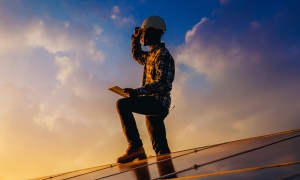
Samsung has announced a detailed sustainability initiative that will span several sectors of its business in order to achieve the greatest environmental impact possible.
The company has laid out a multitiered plan, which it says will take several years and even decades to roll out in its respective stages. Samsung has committed to an investment of over 7 trillion yuan for environmental initiatives by 2030.

One of Samsung’s primary goals is to achieve net zero emissions by 2050. In particular, the company aims to get its DX (Device eXperience) Division to this goal by 2030.
This includes all of Samsung’s consumer electronics branches, such as Mobile eXperience, Visual Display, Digital Appliances, Networks, and Health & Medical Equipment. Meanwhile, the company’s Device Solutions (DS) Division, which comprises the Memory, System LSI, and Foundry businesses, will aim for the 2050 goal.
To help with its net zero emissions goal, Samsung has also joined the RE100 initiative, which is “dedicated to pursuing 100% renewable energy,” the company said.
Samsung is committed to moving its manufacturing outside of Korea and matching electric power with renewable energy sourcing methods at its international operations within five years.
Samsung’s next goal is to maximize the power efficiency and recycling ability of products over their life cycle. The company has committed to developing ultra-low power memory chips to be implemented in data centers and mobile devices by 2025.
Samsung also aims to create low-power technologies for smartphones, refrigerators, washing machines, air conditioners, TVs, monitors, and PCs to decrease their power consumption by at least 30% in 2030, compared to the power levels of those products in 2019.
Similarly, Samsung aims to keep its water withdrawal levels approximately the same as they were in 2021, even though it expects semiconductor production to double between now and 2030. The company is working to establish better water reuse for its DX Division by updating treatment facilities and “restoring the same amount of water as it consumes by 2030.”
The company will also implement new technologies for its DS Division to remove air and water pollutants while manufacturing semiconductors, with the aim that there will be no environmental impact starting in 2040.
Samsung has already begun its recycling efforts by using marine waste such as discarded fishing nets in current devices, including the Galaxy Z Fold 4. The company aims to continue its sustainable resourcing goals with the creation of its Circular Economy Lab, where it will research “material recycling technologies and resource extraction processes.”
Some of Samsung’s other recycling, sourcing, and disposal goals include:
- Establishing a system to extract the minerals from waste batteries for reuse by 2030
- Having 50% of plastic used in its products be made of recycled resin.
- Expanding its waste collection system from 50 countries to about 180 countries by 2030
- Promoting an upcycling program that collects used smartphones for other uses.
The company says its initiative will be observed by the Samsung Institute of EHS Strategy’s certification system and verified by a Carbon Reduction Verification Committee, the latter of which includes third-party experts to track its progress.



